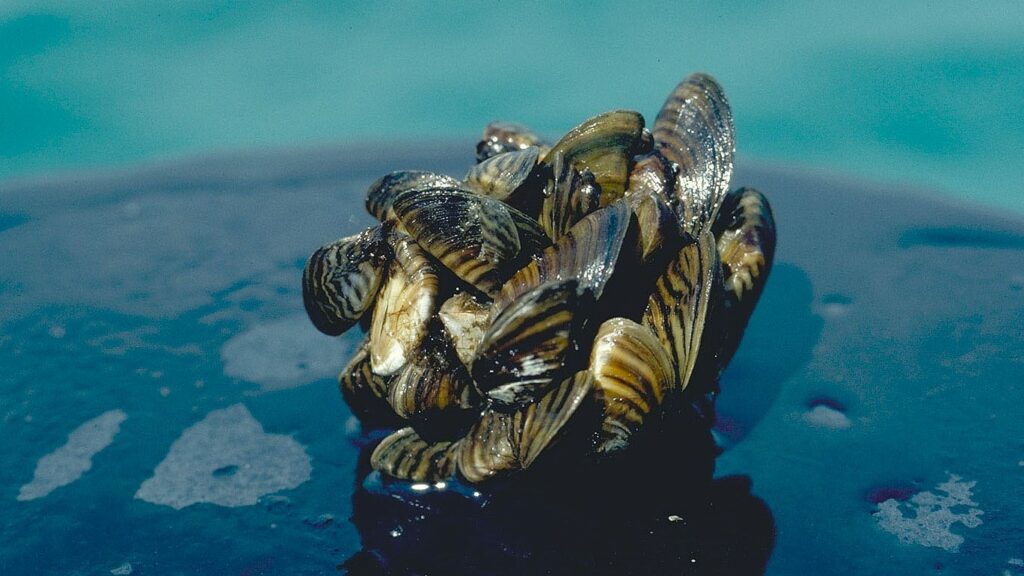
Zebra mussels (Dreissena polymorpha) are fingernail-sized freshwater molluscs that are native to the lakes of south-east Russia. In the last 200 years they have spread to parts of Europe, including Britain and Ireland, and North America.
They outcompete native species for food and space, and thanks to their fast reproduction rates can quickly overwhelm a water system.
What do zebra mussels look like and what characteristics do they have?
Zebra mussels, also known as lake mussels and zebra clams, get their name from their distinctive dark, zig-zagged stripes on each shell. Growing up to 5cm long, these molluscs rapidly form large colonies that attach to almost any submerged hard surface.
They live between two and five years and begin reproducing at two years of age. Each female can release up to a million eggs per year, making them very successful breeders.
How invasive are zebra mussels?
To date zebra clams have been the most aggressive freshwater invader worldwide.
They are both highly efficient feeders and breeders. Once introduced to a body of water their populations can grow rapidly and exceed ten times that of all other native organisms that live on the bottom of a water body. This means that they can quickly dominate lakes, canal and rivers.
How do zebra mussels negatively impact ecosystems?

Zebra clams filter out algae that native species need for food. This change can cause shifts in local food webs; by taking food from native species that feed on plankton and by improving water clarity which makes it easier for visual predators to hunt.
Zebra mussels attach to and incapacitate native mussels. Loss of native mussel populations has increased dramatically where zebra clamsare present.
These clams also attach to crayfish and turtle shells as well as boats and water pipes. They can rapidly coat water intake pipes, creating a costly problem for drinking water treatment plants and power plants.
How can we prevent and control the spread of zebra mussels?
Once a population of zebra clams has become established in a water body, it is very difficult to remove them. Prevention is the best way to control the spread of these lake mussels. Research is ongoing to understand more about the clam’s behaviour and biology.
Catching and transporting zebra clams for use as bait, food, and aquarium pets is discouraged in many countries.
Invasive species expertise
Invasive species are one of the five leading drivers of global environmental change. CABI’s expertise on invasive species spans more than 100 years. We provide robust data on the impacts of invasive species on human well-being, biodiversity and the environment. We also develop practical ways of tackling the biggest threats.
Find out more about our work in invasive species.
Further information about zebra mussels
Zebra mussel (Dreissena polymorpha) datasheet on CABI compendium
Zebra mussel information on the US National Park Service website
1 Comment
Leave a Reply
Related News & Blogs
Biological control in action: Zambia’s field days on fighting fall armyworm
Experts from CABI recently held two field days and an expo in Zambia, showcasing innovative approaches to pest management to 584 farmers, agro-dealers and other stakeholders to help raise awareness of approaches to tackle the invasive fall armyworm (Sp…
11 June 2025





sounds like a real invader!!! it’s great they are at least edible… imagine if they weren’t!